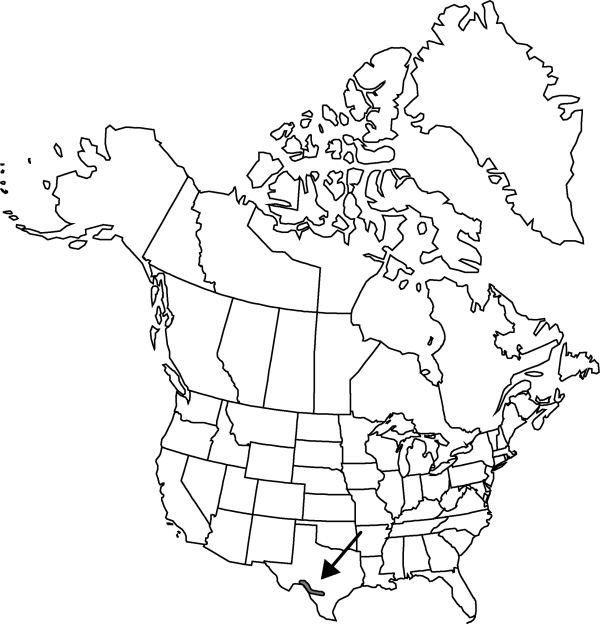Opuntia atrispina
Rep. (Annual) Missouri Bot. Gard. 21: 172, plate 26 (lower). 1910.
Shrubs, erect to sprawling, 0.5–1 m. Stem segments not easily detached, green, flattened, obovate to circular, 10–15 × 7.5–12 cm, nearly smooth, glabrous; areoles 5–7 per diagonal row across midstem segment, ovate or oblong to obovate, 3–5 mm; wool tan. Spines 4–7 per areole, mostly in distal areoles, black to red-brown with conspicuous brown to yellow tips, fading gray; longer spines ascending, usually straight, acicular, terete, 25–35 mm; 1–2 smaller spines deflexed, chalky white, to 10 mm; 0–4 additional very small spines. Glochids in bushy crescent at adaxial edge of areole and dense subapical tuft, yellow to brown, aging blackish, of unequal lengths, to 5 mm. Flowers: inner tepals yellow throughout, quickly fading to apricot, 25–30 mm; filaments and anthers yellow; style whitish; stigma lobes greenish yellow to yellow. Fruits red-purple, green-yellow interior, spheric-obovoid to pyriform, 15–20 × 12 mm, fleshy, glabrous, spineless; areoles 20–25. Seeds tan to gray, subcircular, 3–4 mm diam; girdle narrowly protruding. 2n = 22.
Phenology: Flowering spring.
Habitat: Grasslands, shrublands, limestone hills
Elevation: 400-700 m
Discussion
Opuntia atrispina has been reported from Coahuila, Mexico (H. Bravo-H. and H. Sánchez-M. 1978–1991, vol. 1), but has not been confirmed by the author.
Selected References
None.
